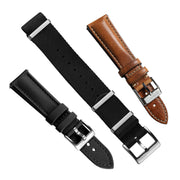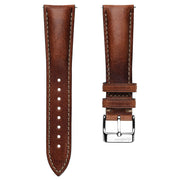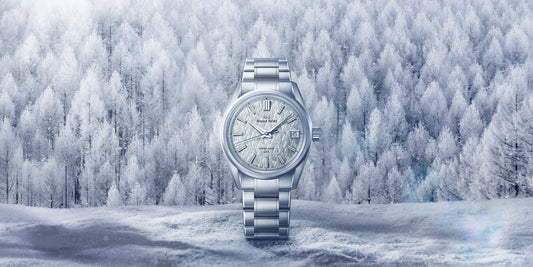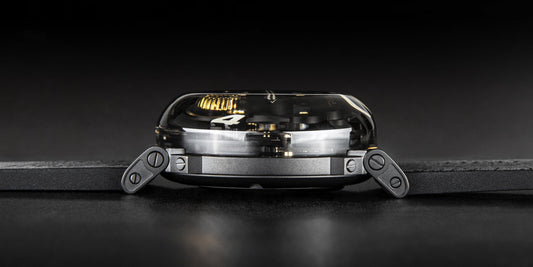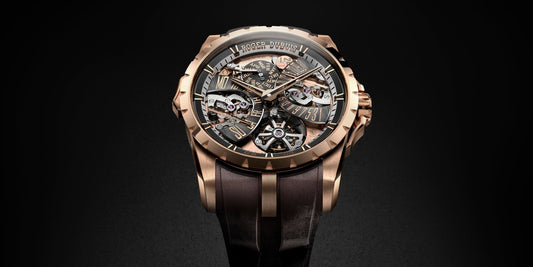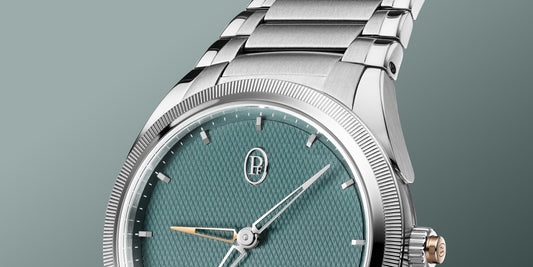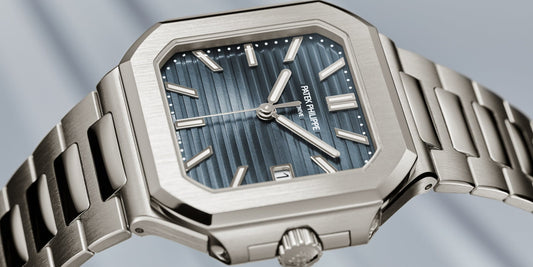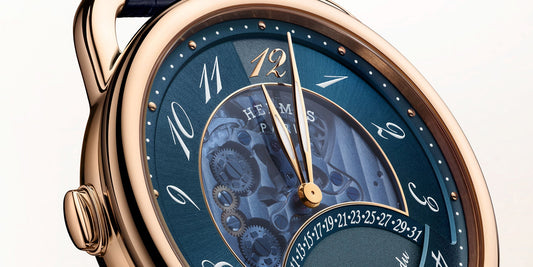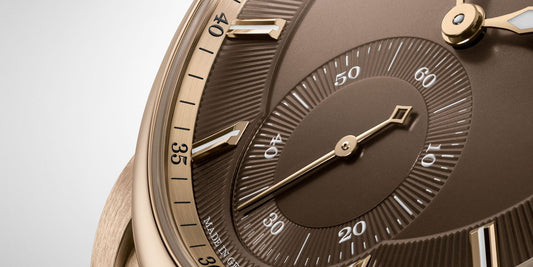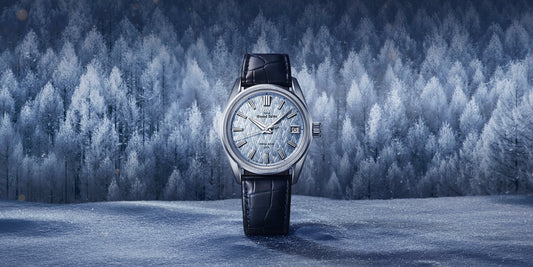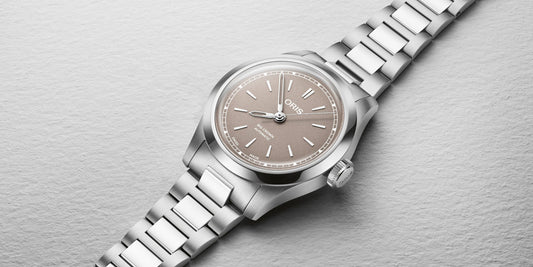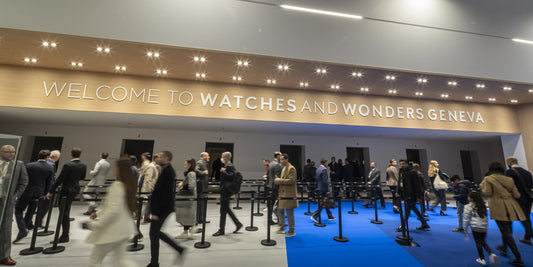As the year draws to a close, we turn our attention to the future—what watch trends does 2025 have in store for the enthusiasts and collections? To answer that question, we’ve invited a group of passionate collectors, industry insiders, and seasoned writers to share their trend predictions for the year ahead. From shifts in design and materials to the next big movements (pun intended), our guest authors reveal the styles and innovations they believe will dominate wrists in 2025. Whether you’re a trend follower or a trendsetter, there’s plenty here to inspire your next horological obsession.
Predicted 2025 Watch Trends
In 2025 I see the spotlight staying well and truly on the British watchmaking industry with the narrative shifting in recognition of the powerhouse of talent and artistry that is spilling out of Britain right now.
We’ve already seen huge growth in engagement towards British brands this year, with crowds gathering at Lindley Hall, London, this March for the inaugural British Watchmaker’s Day in association with the Alliance of British Watch and Clockmakers. In fact, almost 1.5k enthusiasts attended the event, as well as a star-studded line-up of 80 British watch and clock companies.
To understand the impact an event like this can have it’s worth mentioning that over the nine hours of BWMD, Studio Underd0g sold almost 6,000 watches which meant that for one day only their UK sales surpassed that of Rolex.
I predict 2025 will serve us up more watch fairs and community events across the UK. I predict British brands, and microbrands in particular, will have their hard work recognised and they, like Studio Underd0g, will begin to compete with the Swiss giants and household names we’re all familiar with. Though the likelihood is slim that many amongst them will too outsell Rolex, I predict favour will swing in the direction of quirky British brands whose offering of unorthodox and distinguishing designs will set them apart from the crowd.
If 2024 was a challenging year for most of the major Swiss watch brands, many independent brands are currently thriving. Thanks to their agility and innovative design, they are now setting trends and gathering attention beyond the watch collecting crowd.
Coloured and textured dials are currently very popular, but as fashion goes in and out of style, I expect 2025 to be a more restrained year. While the trend for shaped watches will persist, we may witness a comeback of dress watches, along with smaller watch sizes.
As the watch industry is looking for areas of potential growth, I can see brands paying more attention to women’s watches and introducing new entry-level collections next year. On the top end of the market, we can expect 2025 to be an "always more" year, with increasingly complex and extravagant watches being released.

I'm not too sure if my predictions from last year came true with funkier dial colours and brighter options, although I'd like to think they did.
This year, I'd like to see more options in smaller cases sizes - ideally between the 34 and 37mm range - to fit my daintier men's wrist. The likes of Nomos and Christopher Ward have already downsized their Tangente and C1 Moonphase pieces respectively, and it’ll be especially pleasant to see more options fit the bill for those of us for whom a watch over 40mm seems too much and for those of us who do just prefer a smaller piece.
We'll have to see what 2025 brings by way of odd case shapes, too. We thought 2024 might be the year for square watches, which hasn't necessarily come to fruition in the way I'd have personally liked. However, the introduction of the Audemars Piguet [RE] Master02 and Toledano & Chan B/1 this past year gives me hope for some off-the-wall case shapes and designs in 2025, which would certainly add some variation and uniqueness to a lot of collections.
In addition, I'd also like to see more in the way of titanium used as a material for cases and bracelets. It's a wonderful metal for everything from dive to dress watches, especially on a bracelet, given its lighter mass and excellent durability. We've seen the likes of Tudor, Grand Seiko and Christopher Ward use it on some great releases in the last year or two, and it'd be criminal for other marques not to follow suit. It provides a different look to stainless steel, with arguably more contrast against the brighter dials I'd also like to keep seeing over the next year.
Industry-wide, I expect the current trend for cross-brand and even cross-industry collaboration to continue as brands look for evermore creative ways to inspire their current audiences and tap into new demographics in tangental fields that have either the money or potential interest in watches but may not yet have been exposed to them.
In more specific terms, I expect to see more refined dial textures and finishing techniques make their way into high-end sports watches. I foresee an era of more muted, earthy tones — browns, beiges, charcoal greys — to spike significantly, taking the place of the bold and even vivid shades to which we’ve grown accustomed over the past few seasons.
Additionally, look for these more muted display backdrops to be accented by electric, even neon colours like yellow, pink, green, and especially orange (my personal favourite).
I think the average size of watches will continue to creep downward with more brands releasing true “Goldilocks” pieces around the 37–39 mm range.
When it comes to bracelet design, I expect an uptick in if not truly integrated bracelets, but rather “integral” bracelet designs as I christened them in an article on Revolution last year, and referenced again in a later article published on SJX .
Simply put, integrated bracelets (like the famous bracelets of the Patek Philippe Nautilus, H. Moser & Cie. Streamliner, and Audemars Piguet Royal Oak), have a proprietary fitting that renders regular straps or bracelets unusable. Examples of an “integral” bracelet could be said to be the Rolex DateJust Jubilee or Day-Date President, or the more modern Singer Reimagined 1969 collection in which the bracelet’s character is as important, if not more so, than the watch head itself.
For me, it is quite often an exceptional bracelet that makes a good watch great. I want to see more creativity in that field, and I’m confident we will.
Brands need to stop playing it safe and start embracing bold, imaginative designs. It’s becoming tedious to see recycled models from their archives, dressed up with a few new colour options and marketed as “fresh” releases. Whether it’s due to a lack of creativity or an overly cautious approach, the result feels stagnant.
The 1970s were a golden era for experimental watchmaking. Designers weren’t afraid to take risks, producing daring and sometimes eccentric creations. Sure, not every attempt was a masterpiece, but at least they were trying. That sense of adventure is sorely needed today. My prediction for 2025? A resurgence of shaped and sculptural designs that challenge the norm.
Take the Anoma A1 and Toledano & Chan B/1, for example. Both models embraced unique aesthetics and sold out almost instantly, proving there’s a strong market for watches that think outside the box. Established brands should take note and follow suit. Imagine if Patek Philippe had taken a more ambitious approach with their Cubitus—perhaps it would have been celebrated rather than overlooked.
As I’ve said before, fewer circles and more corners should be the mantra for modern watch design. We need creations that stand out and represent the future, not endless tributes to the past.
Interestingly, it’s the smaller independent brands that are driving innovation. They’re capturing the imagination of collectors and proving that daring designs can succeed. Let’s hope the big players take a page from their book in 2025.
I’ve never been very good at predicting watch trends, and I think that’s because half of the time I predict the things I want to happen (in the hope manifestation really does work). But this year, I’ll give it a go regardless. For starters, I think we’re going to see lots more stone dials. It’s been a big trend of 2024, and I can see a lot of other watchmakers following suit in the new year.
We’ve just seen Baltic release three new Prismic watches with stone dials, as well as the Nivada F77 “Anthracite” and the Rolex Day-Date Eisenkiesel over the last twelve months. I think it’s a sign consumers are leaning toward personality and narrative over price. It’s also likely a trend that has come off the back of all the bright coloured watch dials we’ve seen over the last couple of years. People will always love a classic black, navy or silver dial, but there are more of us wanting something different, something that doesn’t look like every other watch. I think the stone dial trend fits this mould perfectly.
I also predict (or at least hope) that there’s going to be more focus on microbrands. There are so many small watchmakers out there that deserve more credit and I’m hopeful more collectors will start to take notice. It would also hopefully encourage some of the bigger brands to step up their game. I think there are certain larger watchmakers that need to rethink their strategies, stop inflating prices so drastically, and ease up on making their models nearly impossible to obtain. Collectors value quality, narrative, and authenticity far more than exclusivity for its own sake, and it’s time the big players started acting like it. Like I said, I’ve never been good at predictions – they’re more like dreams…

Blame Patek Philippe if you like. The Cubitus certainly got everyone talking, but as other established brands such as Jaguar have recently proved, controversy is the oxygen of publicity.
After years of the accepted wisdom being that rectangular watches don’t sell, I think there will be something of a shift towards different case shapes and sizes in 2025.
At least one manufacturer has mentioned recently that they thinking of releasing a “radical” case shape, and another British microbrand says that their rectangular watch is their best-seller. Over in Switzerland, Gerald Charles – founded by the legendary Gerald Genta in 2000 – only makes asymmetric case shapes.
So I believe we could see brands embrace more ‘controversy’ in future and actively look to do things differently; starting with a few unusual case shapes and sizes.
Trends tend to go in cycles, and we’ve seen watches get scaled down recently, all the way down to classic vintage sizing of around 35 or 36mm. That’s probably hit the bottom now, so I think we might begin to see sizes creep up again: especially as we all get older and our eyesight gets weaker. Some of the smaller and busier watches are getting really hard to read now. Or is it just me?
Likewise, we’ve seen an explosion of colour recently – typified by Nomos releasing a collection of no fewer than 31 coloured watches this year – and I think this might come full circle in future, to temper the shift towards different cases.
Will we see a return to monochrome, especially as 2025 is a nice round figure of a year with a certain gravitas? Expect a few limited editions to mark the occasion, catering for the increased public appetite for personalisation and exclusivity.



















